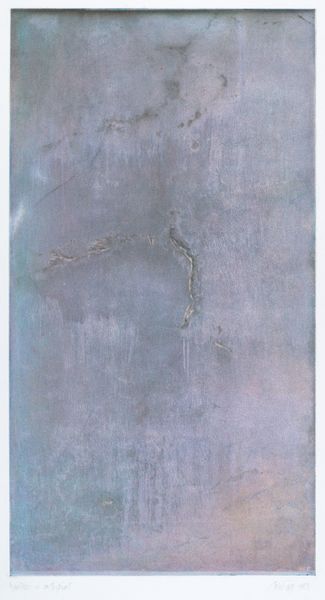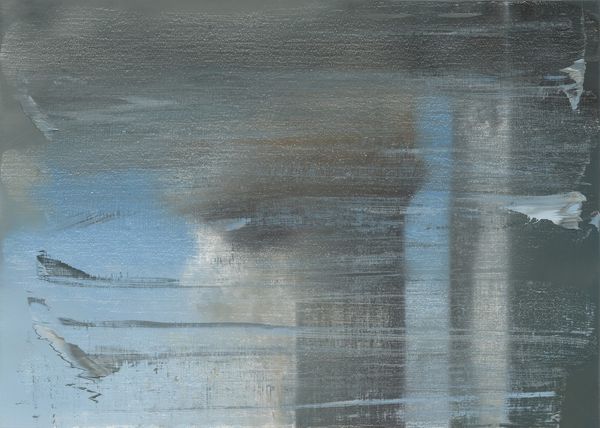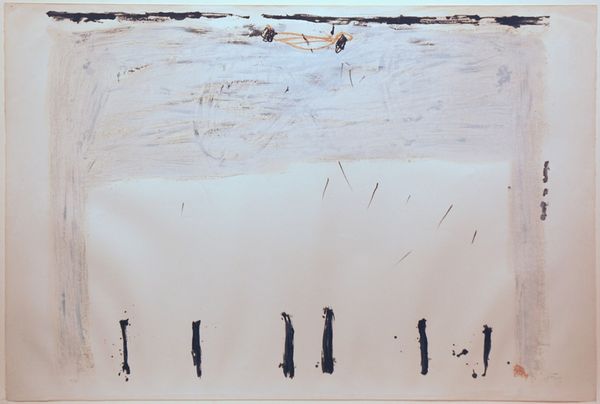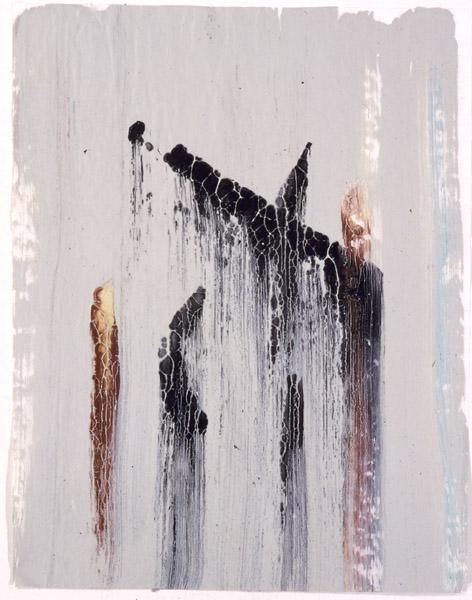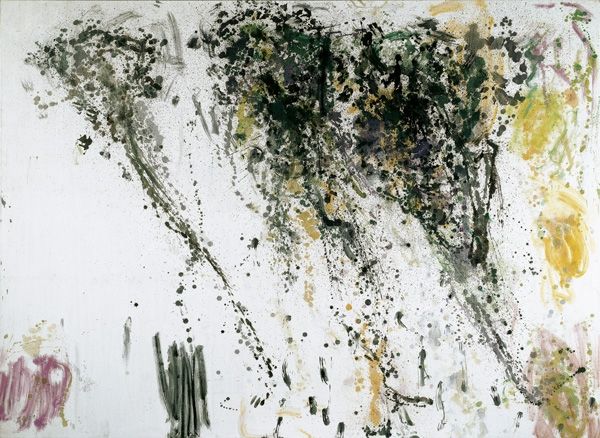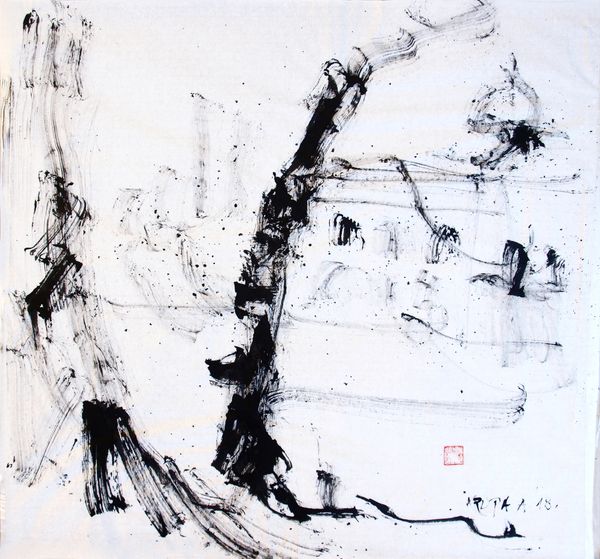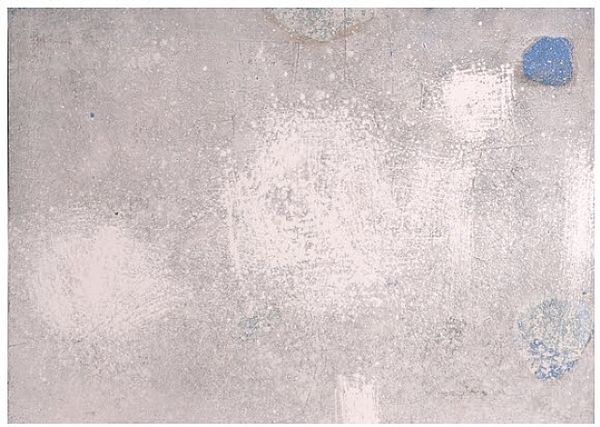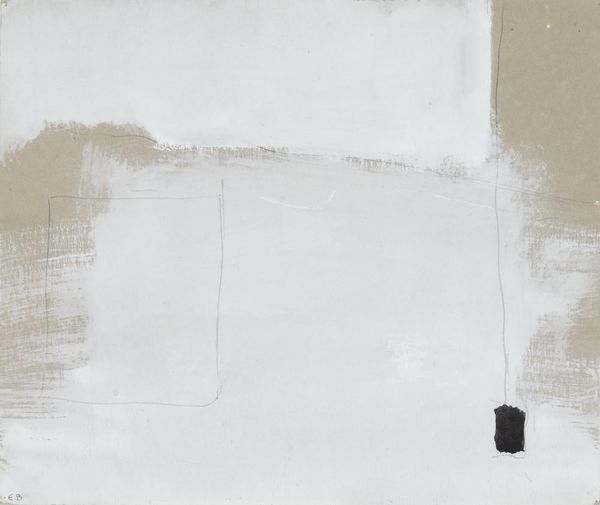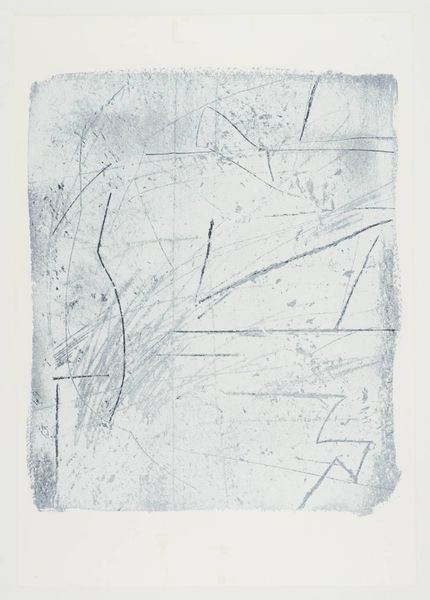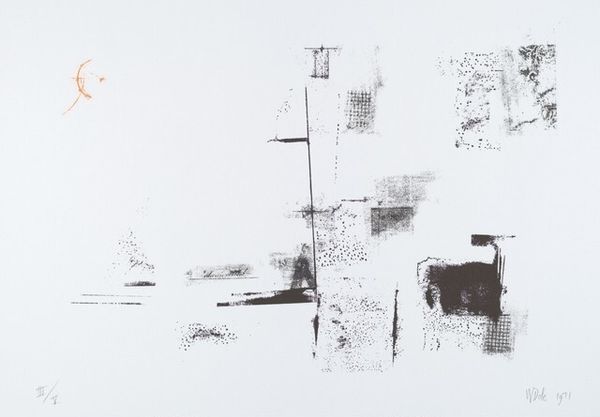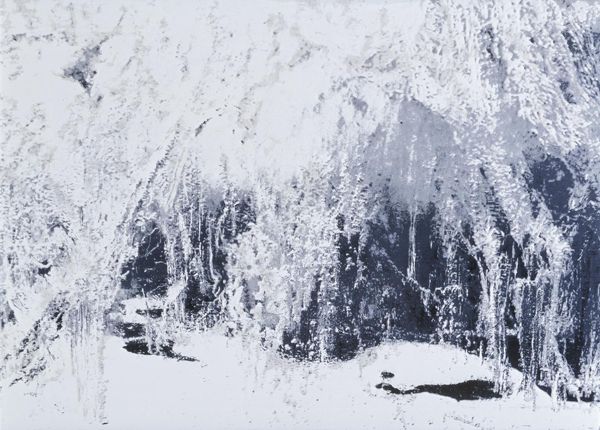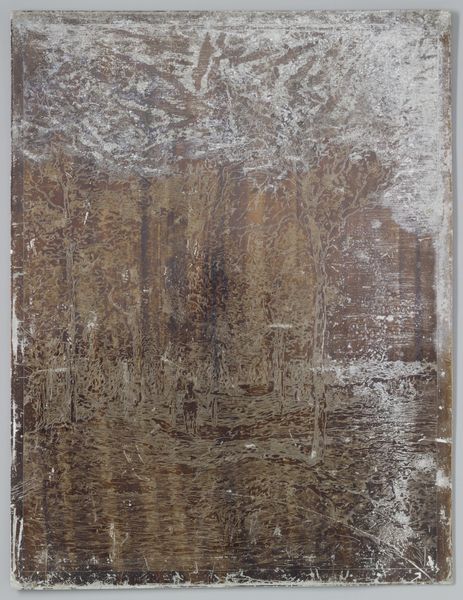
mixed-media, photography, site-specific
#
tree
#
mixed-media
#
landscape
#
photography
#
site-specific
#
abstract-art
#
line
#
abstract art
Dimensions: 89 x 57 cm
Copyright: Abbas Kiarostami,Fair Use
Editor: Abbas Kiarostami’s "The Wall #2," made in 2010, is a mixed-media work incorporating photography and site-specific elements. What strikes me is the stark contrast between the rough texture of the wall and the delicate lines of what seems to be vegetation. How do you interpret this work? Curator: I see this as a commentary on the urban environment, framed by Kiarostami’s perspective. The photograph itself documents the slow decay of a human-made structure, a wall, likely in an urban setting. This deterioration is juxtaposed with the tenacious growth of nature – those delicate branches or vines reaching down. Do you see this tension too? Editor: Definitely. It's like a battle between nature and human construction. Does the crumbling wall say anything about impermanence in urban spaces? Curator: Precisely! Consider the social history of walls: they are built to define, protect, and separate, reflecting societal power structures and control of space. Yet, here, the wall is vulnerable, succumbing to the relentless forces of nature, isn't it? Kiarostami, who often engages with social issues through seemingly simple observations, prompts us to reflect on the limitations of human-made structures. The “wall” isn’t impenetrable, it becomes a canvas. Editor: It’s a fascinating viewpoint. The wall becomes more than just a barrier, doesn’t it? More like a stage. Curator: Exactly. It underscores how even our most solid creations are subject to time and nature. Thinking about how it intersects with abstract art invites speculation on where these images might be found. Perhaps places left in ruins. Editor: It’s amazing how a simple photograph of a wall can unpack so many layers. Curator: Agreed. It demonstrates art’s ability to hold socio-political meanings, captured in what seems like a mundane image. Thanks, that’s a perspective that enriches how I appreciate Kiarostami’s broader practice.
Comments
No comments
Be the first to comment and join the conversation on the ultimate creative platform.

